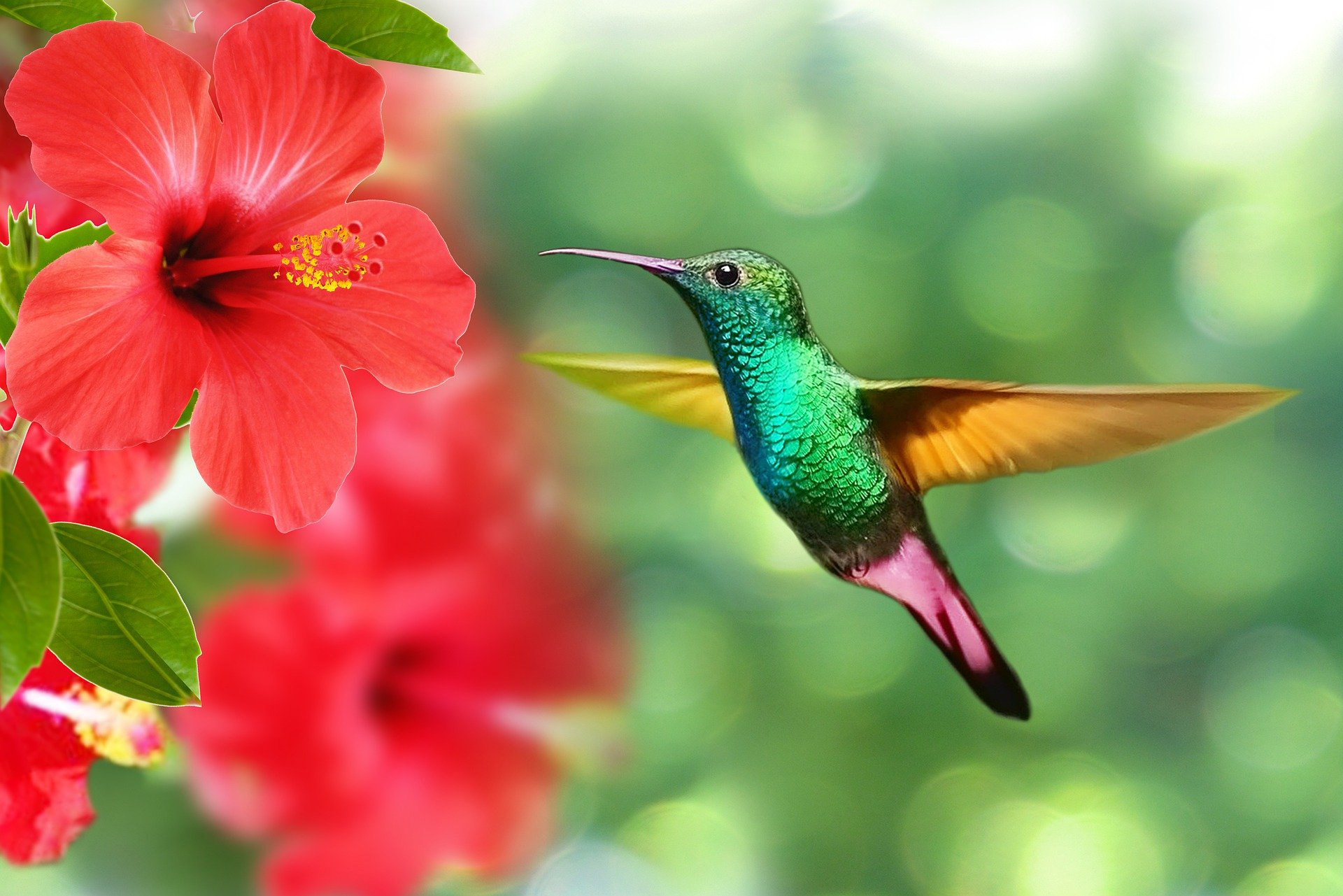
By Stephen W. KressHummingbird Gardens – Audubon . org
Hummingbirds prefer openings in the forest and forest edge, and so are readily drawn to suburban and rural gardens that offer a mix of tall trees, shrubs, and patches of meadow and lawn. They are less likely to frequent cities, perhaps because they find fewer flowering plants for food and trees for nesting. Yet even in the largest cities, hummingbirds occupy parks and sometimes visit window boxes or rooftop gardens planted with bright flowers, especially during migration.
Once hummingbirds discover your property, the same individuals are likely to return each year at about the same time; they are remarkable creatures of habit. The number of hummingbirds that frequent your yard is closely linked to the abundance of food, water, nesting sites, and perches. Following are 10 practical Steps you can take to create an ideal hummingbird garden.
Step 1
Draw a sketch of your yard, indicating the location of the house and outbuildings such as garages and tool sheds. Include trees, shrubs, existing flower beds, and other features likely to benefit hummingbirds. Work with these existing features, enhancing them with additional plantings.
Step 2
Using your landscape sketch, find a good spot to be the focus of your hummingbird garden. A site near a window or patio door will give you a front seat on the action. Hummingbird gardens need not be large—even a flower box or trellis will do. Gardens planted exclusively with hummingbird plants will attract more birds, but even a few choice plants added to existing gardens will feed some hummers.
Step 3
Think vertically when planning your hummingbird garden. Use trellises, trees, garden sheds, or other structures to support climbing vines; add window boxes, wooden tubs, or ceramic pots to create a terraced effect and provide growing places for a variety of plants.
Step 4
Select native plants for your garden. Learn which plants hummingbirds feed on in natural areas near your home. Native hummingbird plants and local hummingbird species have a long association in which plants serve as a reliable source of nectar at the same time each year. Keep in mind that cultivated varieties of impatiens and rhododendrons may look promising, but have little value to hummingbirds; these are selected for flower size, color, and shape, but are not good nectar producers. Do not plant exotic flowering plants, such as Japanese and tartarian honeysuckles, which are attractive to hummingbirds but invade neighboring fields and woodlands, crowding out more beneficial native shrubs and wildflowers.
Step 5
Choose red, tubular flowers, as these are quick clues to a flower’s value as a hummingbird food supply. Hummingbirds are also attracted to orange and pink flowers, but they find yellow and white blooms less attractive. Red, non-tubular flowers such as roses and geraniums may lure hummingbirds with their blooms, but they offer little nectar, so the birds quickly reject them. Flowers that rely on sweet scents to attract insect pollinators usually do not provide a nectar source for hummingbirds.
Step 6
Plant patches of the same species (three or more plants) to provide larger quantities of nectar.
Step 7
Select plants that bloom at different times of the year to provide nectar throughout the hummingbird season.
Step 8
Prune your plants to prevent excessive woody growth and instead favor production of flowers.
Step 9
Learn about local hummingbird habits and which species are likely to occur near your home. Study the migration dates, nesting season, and seasonal presence. This knowledge will help you select plants that will bloom during the time that hummingbirds are likely to visit your yard.
Step 10
Include some fuzzy plants. Hummingbirds usually line their nest with soft plant fibers. Two favorites are cinnamon fern, which has a fuzzy stem, and pussy willow. Leave some thistle and dandelion, other favorite nest-building materials, in your yard.
